
The cyanotype is a slow-reacting, economical photographic printing formulation sensitive to a limited near ultraviolet and blue light spectrum, the range 300 nm to 400 nm known as UVA radiation. It produces a cyan-blue print used for art as monochrome imagery applicable on a range of supports, and for reprography in the form of blueprints. For any purpose, the process usually uses two chemicals: ferric ammonium citrate or ferric ammonium oxalate, and potassium ferricyanide, and only water to develop and fix. Announced in 1842, it is still in use.
Richard Joseph Anuszkiewicz was an American painter, printmaker, and sculptor.
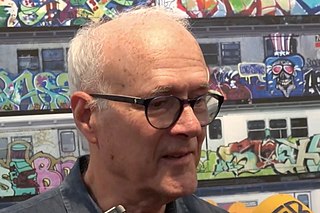
Henry Chalfant is an American photographer and videographer most notable for his work on graffiti, breakdance, and hip hop culture.

Leonard Baskin was an American sculptor, draughtsman and graphic artist, as well as founder of the Gehenna Press (1942–2000). One of America's first fine arts presses, it went on to become "one of the most important and comprehensive art presses of the world", often featuring the work of celebrated poets, such as Sylvia Plath, Ted Hughes, Anthony Hecht, and James Baldwin side by side with Baskin's bold, stark, energetic and often dramatic black-and-white prints. Called a "Sculptor of Stark Memorials" by the New York Times, Baskin is also known for his wood, limestone, bronze, and large-scale woodblock prints, which ranged from naturalistic to fanciful, and were frequently grotesque, featuring bloated figures or humans merging with animals. "His monumental bronze sculpture, The Funeral Cortege, graces the Franklin Delano Roosevelt Memorial in Washington, D.C."

Arthur Bowen Davies was an avant-garde American artist and influential advocate of modern art in the United States c. 1910–1928.

Anni Albers was a German textile artist and printmaker credited with blurring the lines between traditional craft and art.
Besides surface qualities, such as rough and smooth, dull and shiny, hard and soft, textiles also includes colour, and, as the dominating element, texture, which is the result of the construction of weaves. Like any craft it may end in producing useful objects, or it may rise to the level of art.
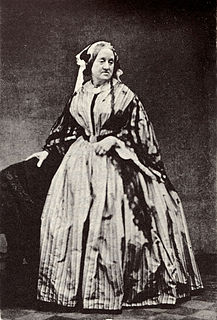
Anna Atkins was an English botanist and photographer. She is often considered the first person to publish a book illustrated with photographic images. Some sources say that she was the first woman to create a photograph.
Toshiko Takaezu was an American ceramic artist, painter, sculptor, and educator who was known for her rounded, closed forms that viewed ceramics as a fine art and more than a functional vessel. She is of Japanese descent and from Pepeeko, Hawaii.
D. Wayne Higby is an American artist working in ceramics. The American Craft Museum considers him a "visionary of the American Crafts Movement" and recognized him as one of seven artists who are "genuine living legends representing the best of American artists in their chosen medium."

Reuben Tam was an American landscape painter, educator, poet and graphic artist.

Jennifer Losch Bartlett was an American artist. She was known for paintings and prints that combine the system-based aesthetic of conceptual art with the painterly approach of Neo-Expressionism. Many of her pieces were executed on small, square, enamel-coated steel plates that are combined in grid formations to create very large works.
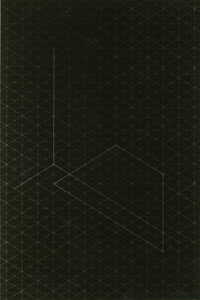
Fred Sandback was an American minimalist conceptual-based sculptor known for his yarn sculptures, drawings, and prints. His estate is represented by David Zwirner, New York.
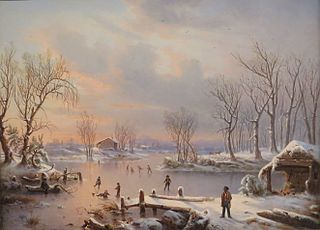
Régis François Gignoux (1814–1882) was a French painter who was active in the United States from 1840 to 1870.

Diane Burko is an American painter and photographer. She is currently based in Philadelphia and Bucks County, Pennsylvania. Her work addresses landscape, climate change and environmental activism.

Frederick Schiller Cozzens (1846–1928) was an American marine artist.
Vera Lutter is a German artist based in New York City. She works with several forms of digital media, including photography, projections, and video-sound installations. Through a multitude of processes, Lutter's oeuvre focuses on light and its ability to articulate the passing time and movement within a tangible image.

Kenneth Wayne Bushnell was an American visual artist, who was born in Los Angeles. He earned a BA from the University of California, Los Angeles in 1958, and then moved to Hawaii, where he received an MFA from the University of Hawaiʻi in 1961. He taught painting at the University of Hawaiʻi at Mānoa from 1961 to 1981, and was appointed chairman of the Art Department in 1991. He married fellow artist Helen Gilbert in 1995. Bushnell eventually earned the title of professor emeritus, living in Honolulu.
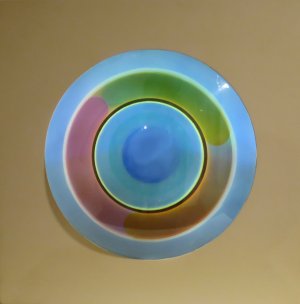
Helen Gilbert, also known as Helen Gilbert-Bushnell, Helen Odell Gilbert and Helen Odell, was an American artist and art-educator born in Mare Island, California. She earned a baccalaureate in art at Mills College, in California. After graduation, she moved to Honolulu, where she married Honolulu physician Fred Gilbert. In 1968, she received an MFA degree from the University of Hawaii at Manoa, and then remained on the faculty for 30 years. Her second marriage was to fellow artist Kenneth Wayne Bushnell in 1995. She had also been a visiting professor at Parsons The New School for Design and the Pratt Institute. She died at home of cancer on April 8, 2002.
Dawn Clements (1958–2018) was an American contemporary artist and educator. She was known for her large scale, panoramic drawings of interiors that were created with many different materials in a collage-style. Her primary mediums were sumi ink and ballpoint pen on small to large scale paper panels. In order to complete a drawing she cut and pasted paper, editing and expanding the composition to achieve the desired scale. Her completed drawings reveal her working process through the wrinkles and folds evident in the paper. She described her work as “a kind of visual diary of what [she] see[s], touch[es], and desire[s]. As I move between the mundane empirical spaces of my apartment and studio, and the glamorous fictions of movies, apparently seamless environments are disturbed through ever-shifting points of view.”
Lola Flash is an American photographer whose work has often focused on social, LGBT and feminist issues. An active participant in ACT UP during the time of the AIDS epidemic in New York City, Flash was notably featured in the 1989 "Kissing Doesn't Kill" poster.










